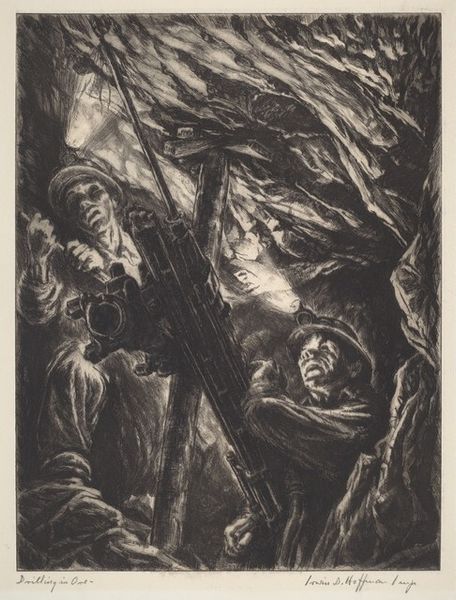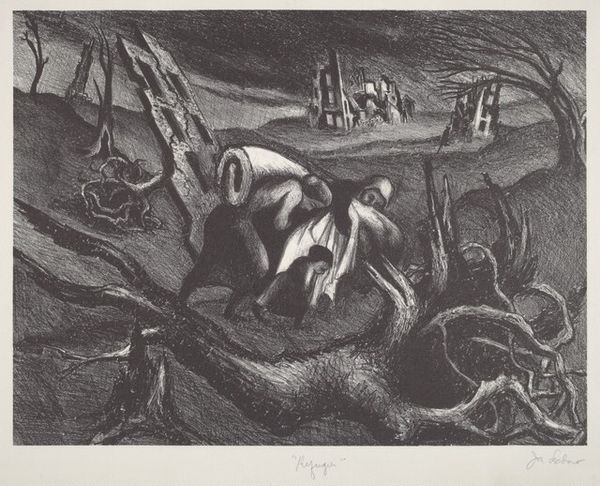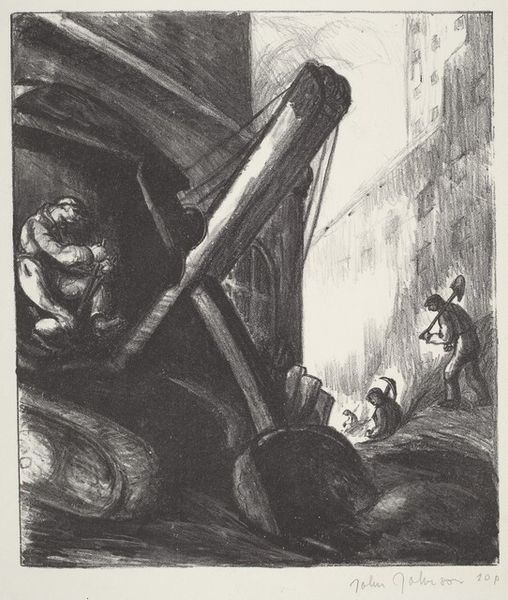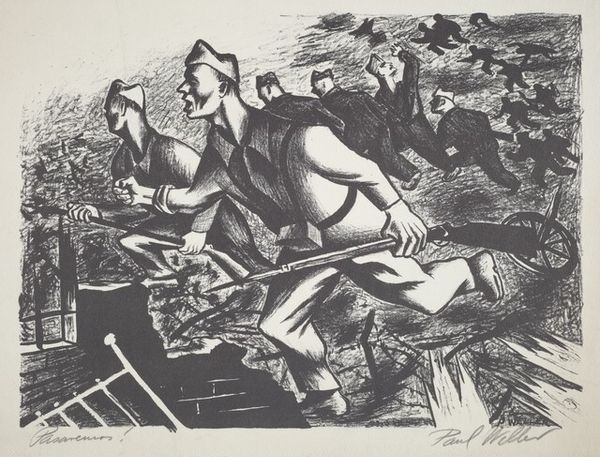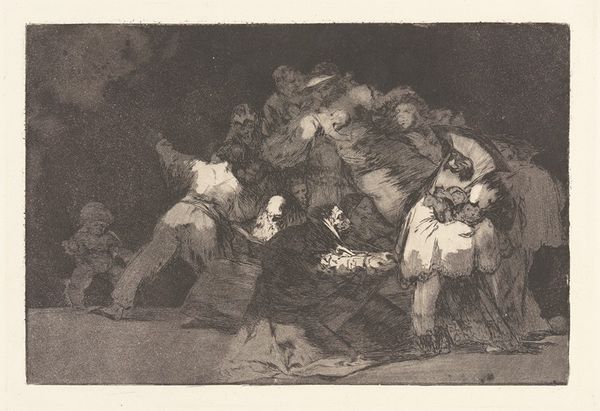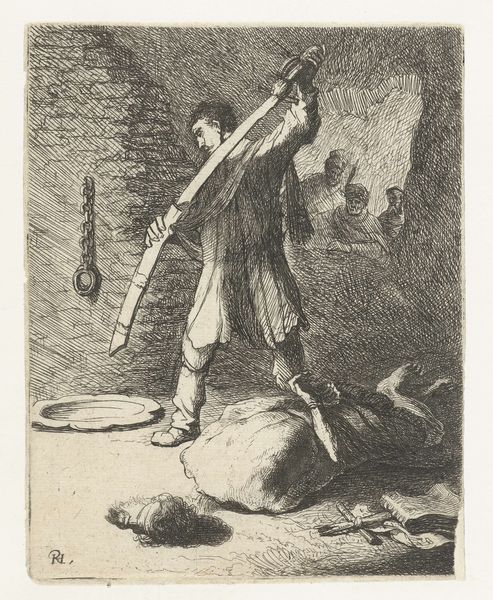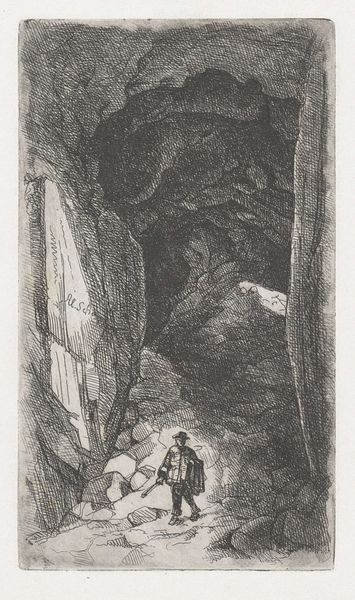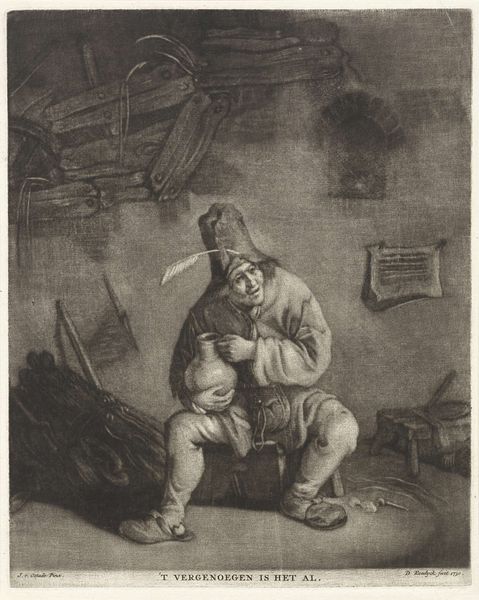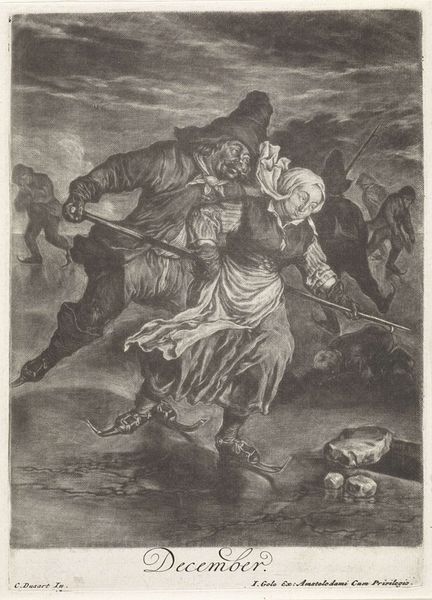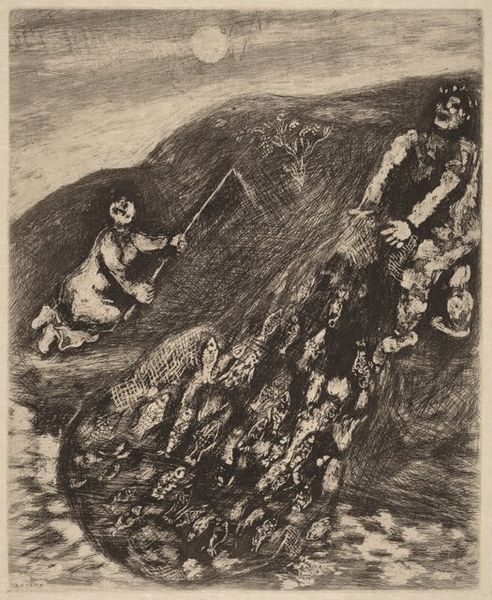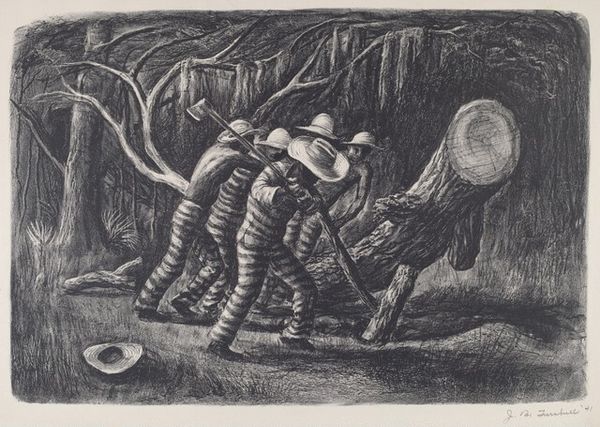
Dimensions: image: 38.4 × 54.3 cm (15 1/8 × 21 3/8 in.) sheet: 46.5 × 61 cm (18 5/16 × 24 in.)
Copyright: National Gallery of Art: CC0 1.0
Curator: Harry Sternberg’s print, created in 1936 and titled *Drilling in a Breast*, pulls us into the world of coal mining. Editor: My first impression is of claustrophobia. The dramatic chiaroscuro really heightens the feeling of being trapped, almost entombed, within the earth itself. Curator: Sternberg was deeply engaged with social issues, particularly those impacting working-class people during the Depression era. He used his art as a tool to expose their realities, to challenge viewers to confront injustice. This work reflects the arduous and dangerous labor endured by miners, men extracting resources while risking their lives and bodies. Editor: Absolutely. The Hercules explosives box gripped by the second miner is particularly evocative; it highlights both the industrial scale of the mining operation and its dependence on volatile, masculinized practices. Can you say more about the image's composition and its impact? Curator: The figures are huddled in close proximity, illuminated by helmet lamps that cast an eerie glow. There’s an intensity of labor on display as the lead miner drills into the rock. His determined stare conveys unwavering focus in what must have been physically exhausting work. The way the rough rockface encloses them adds another layer. We feel hemmed in with them. Editor: The use of stark blacks and whites reinforces this sense of harshness and the constant struggle. These weren't glamorous jobs; Sternberg uses the visual language of realism to reflect these grim facts, pushing against romanticized depictions of labor we see elsewhere. The visual effect evokes a powerful empathy. The aesthetic decisions place this firmly in a tradition of social-realist printmaking which, as we know, played a key role in shaping political consciousness in the 1930s. Curator: Indeed. Looking at *Drilling in a Breast* forces us to grapple with our connection to extractive economies and consider who is asked to make certain sacrifices. It pushes us to examine questions around class, environment, and what we owe workers—questions we grapple with today just as much as back then. Editor: Agreed. Sternberg's artwork serves as a visual touchstone, reminding us of these deep continuities. Curator: Thank you. This image leaves us much to consider.
Comments
No comments
Be the first to comment and join the conversation on the ultimate creative platform.
